Changing climates
Jorisna Bonthuys

Dealing with the twin crisis of climate change and biodiversity loss requires enormous collective effort, and now demands novel academic support across ‘traditional’ academic silos.
The world is facing cascading and intersecting crises such as these, warns Prof Guy Midgley, who heads up Stellenbosch University’s (SU’s) School for Climate Studies. “We need to change how we work, live and sustain our energy needs, while pursuing socioeconomic development,” he adds.
Midgley, a distinguished professor in SU’s Department of Botany and Zoology, is considered one of the world’s most influential climate scientists. In addition to being responsible for getting the School for Climate Studies up and running, he is also the acting director of SU’s Centre for Invasion Biology (CIB).
“Dealing with the planetary emergency we currently face requires swift and informed responses,” Midgley says. “Nothing less than fundamental paradigm shifts are needed to tackle climate change, biodiversity loss, and their effects on our world and our society.”
How to save both nature and jobs
According to Midgley, the cumulative effects of global socioeconomic development threaten the stability of planetary systems that sustain life and livelihoods. These effects are now causing the beginnings of dangerous interference with Earth’s climate system, he says.
“As a society, the solutions we embrace to deal with the climate changes underway must balance the need for very necessary socioeconomic development with the sustainable use of environmental resources. Also, the kinds of transitions needed to deal with the effects of climate change are amongst the most challenging ever faced by modern society.
“This is a challenge of epic proportions,” Midgley says. “The good news is that we have the science to understand much of it. But the question now is: How do we get to our solutions?”
SU’s scientific community has much to offer in terms of finding solutions to some of the most pressing climate-related risks and challenges. Researchers at the institution are already generating new, transdisciplinary knowledge in diverse fields, including botany, law, medicine and engineering.
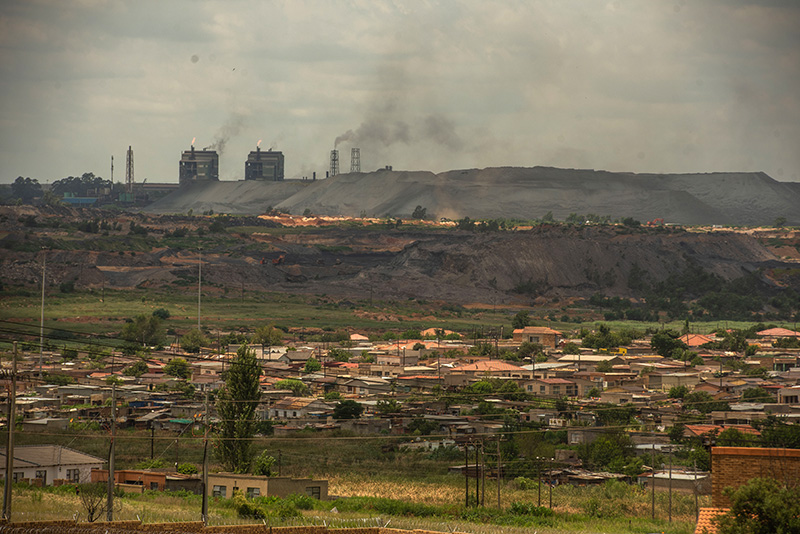
Photo by Alex Pretorius
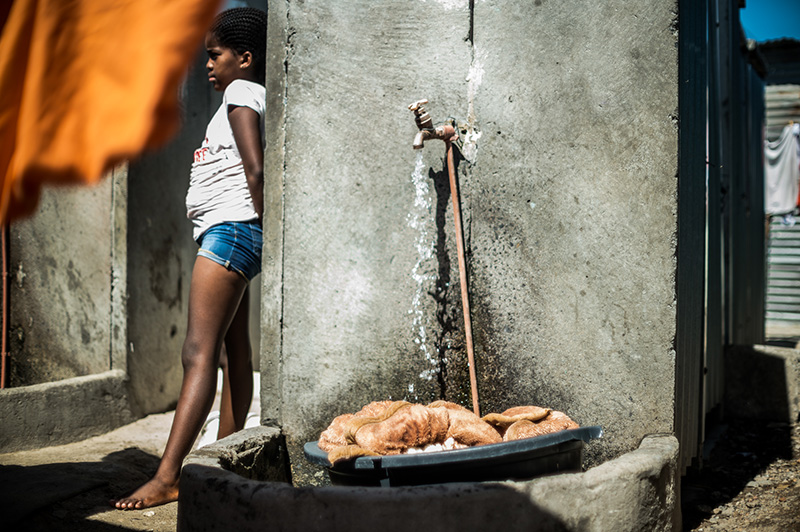

Photo by Anastasia Palagutina - Unsplash
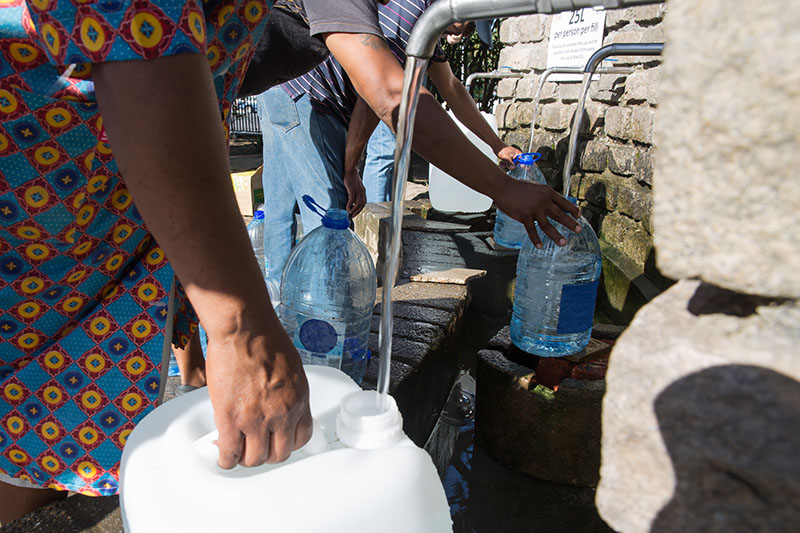
Photo Shutterstock
A school for change
The School for Climate Studies has the status of a faculty but its work transcends the boundaries between the University’s 10 faculties and 77 departments.
Affiliated researchers are combining their efforts to improve our understanding of the changes underway, and of how best to deal with climate-related risks and unfolding realities. The research partnerships enabled by the School are also helping them unlock funding in the highly competitive higher-education sector and play a strategic role in various regional and global consortia.
SU is well-placed to deal with the complexity of addressing the climate challenge, Midgley believes.
Currently, SU scientists are working on several projects that support appropriate climate mitigation and adaptation responses in South Africa and elsewhere on the continent. SU responses include innovative efforts to understand ecological changes on land and in the Southern Ocean, to explore legal tools and mechanisms to mitigate climate change, and to prepare a new generation of medical experts for dealing with climate-related impacts on human health, including the burden of disease.
The Development and Rule of Law Programme (DROP), for instance, focuses on how climate adaptation and mitigation efforts should connect with a broader sustainable development agenda. This programme — linked to the Stellenbosch University Water Institute (SUWI) — focuses on sustainable development law and policy.
Midgley’s own research group, the Global Change Biology Group, tracks the functioning of important species in diverse southern African ecosystems, such as fynbos, savannas, open oceans and estuaries, and links the resilience of these systems to climatic drivers.
In addition, SU conservation biologists have identified which areas are needed for the persistence of thousands of species that support the ecological infrastructure upon which we all depend. Researchers have also been involved in efforts to assess protected area vulnerability to climate change in South Africa’s national parks.
In the Department of Botany and Zoology, experts are calculating the biodiversity risks of climate change by projecting its impacts on plant and animal species in the near future. Climate models project that, if global greenhouse gas emissions are not drastically reduced over the next decade, there will be significant changes in the distribution of ecosystem types on land, and an increased risk of extinction for 10% to 20% of endemic species.
It is more than just the loss of individual species that is at stake — reductions in species diversity and their interactions due to habitat degradation and fragmentation generally result in reduced ecosystem functioning. Midgley adds that, from an adaptation perspective, gaining new knowledge in this field is valuable in that it can inform land use and development planning and conservation.

Unprecedented changes and challenges
In 2022, a sober assessment of our planet’s future was released by the United Nations’ (UN’s) Intergovernmental Panel on Climate Change (IPCC), a group of scientists whose findings are endorsed by the world’s governments. This assessment, which SU scientists contributed to, is considered the most comprehensive overview to date of the physical science of climate change.
The recent changes in Earth’s climate are widespread, rapid and intensifying, not to mention unprecedented in thousands of years.
It is now indisputable that human activities are causing climate change, making extreme climate events – including heatwaves, heavy rainfall and droughts – more frequent and severe.
Earth is also warming faster than previously thought, and the window to avoid catastrophic outcomes is closing. With every 0,1 °C of global warming, there are clear increases in the intensity and the frequency of a large number of extreme event types. This means that every bit of global warming matters, Midgley emphasises.
The IPCC’s report indicates that, without swift international action on energy transitions, that the crossing of the 1,5 °C threshold in temperature rise (compared to the global average temperature in pre-industrial times) may occur from the 2030s.
Moreover, the IPCC’s authors says the current rate of warming could put Earth at risk of crossing dangerous climate ‘tipping points’ with higher levels of warming. This, in turn, may cause major disruptions to planetary systems by triggering large-scale singular events, such as the collapse of Antarctic ice sheets or Amazon rainforests.
In recent years, our region has not been spared from the impact of extreme events. Examples of unprecedented climate impacts in southern Africa include the human tragedy of tropical cyclone Idai in March 2019 (which cost the lives of more than 1 300 people in Mozambique, Zimbabwe and Malawi), the Cape Town ‘Day Zero’ drought of 2015–2017, and the 2015/16 El Niño drought in South Africa’s interior. (This particular El Niño event was the strongest one ever measured.)
Some of the strongest projected global drying trends are to be found in southern Africa. The region is warming sharply, at about twice the global rate of warming. Along with higher temperature levels and increased evaporation, the implications of droughts and climate change for surface runoff and the long-term assurance of water supply are serious.
“That is why our region is so vulnerable and why it is regarded as a climate change hotspot. When an already dry and warm region becomes even drier and warmer, the options for adaptation are greatly limited,” Midgley warns. This situation ups the urgency of implementing effective plans for increasing local climate resilience and biodiversity management.
The scientific consensus is that climate change is a ‘threat multiplier’, meaning it increases the likelihood and severity of extreme events. For example, the recent severe multi-year drought in the Western Cape was three times more likely to occur because of the human influence in climate change.
Understanding risks and vulnerability
Over the next few decades, South Africa will face significant climate-related challenges across many social and economic sectors. One of these challenges is dealing with growing water needs among stakeholders with competing interests.
“Improving the resilience of different sectors to rising shocks and stresses under climate change is vital,” Midgley says. “Resilience is dynamic, socially contingent and often context specific.”
Since 2011, prolonged droughts across South Africa have forced water users to examine farming system risks and efficiencies. “Already, some of our strategic water source areas in the Western Cape are operating at a deficit in terms of the biodiversity needed to maintain functionality in the long term,” Midgley says. “This could mean that our water security will be compromised in the near future.”
It is becoming clear that climate change will create new risk management challenges for farm-level adaptation and decision-making. Through the SUWI, recent studies have explored how irrigated agriculture in the Breede River catchment in the Western Cape was affected by the recent multi-year drought in the province. These and other studies at SU have investigated links between implications at the individual farm scale, where efficient irrigation scheduling and appropriate technologies are applied, and implications at regional scales.
Efforts are also underway to build hydrological expertise in the School for Climate Studies that can inform appropriate regional adaptation responses and ensure that ecological benefits keep flowing from catchments.
Understanding the impacts of climate change on a local and regional level requires the development and refinement of hydrological modelling tools, Midgley says. However, data scarcity hinders how and where the models can be used outside of South Africa. This causes uncertainty about the accuracy of the models’ results, especially in sub-Saharan Africa.
In this regard, the SUWI’s Dr Andrew Watson and others have been considering how climate extremes in the Western Cape influence rainfall-runoff model performance and uncertainty. In 2022, Watson and his collaborators published their research findings on hydrological variability in the province, calculated by means of a multi-catchment approach (for the Verlorenvlei, Berg, Eerste, Breede and Bot River catchments).
Midgley says this kind of research is considered important for reducing uncertainties in modelling. It helps researchers achieve more credible simulations of regional water balances and hydrological processes amid climate change. “The information generated can help policymakers and people involved in disaster risk management help ensure that our water infrastructure and planning are ready for the changes coming our way,” he adds.

Scientists and global health organisations are emphasising the importance of implementing strategies to curb climate change in order to prevent an increase in health problems, including the spread of infectious diseases such as malaria.
Climate change and health hazards
Increasingly, SU researchers are also exploring the link between climate change and future health hazards. Climate change is considered the greatest threat to human health in the 21st century, Prof Bob Mash, head of SU’s Department of Family and Emergency Medicine, recently highlighted in an online public lecture series.
According to Mash, there are three important factors in the nexus between climate change, human health and health systems: the impacts of climate change on the burden of disease, the impacts of the burden of disease and climate change on health facilities and services, and the contribution of health systems to the problem of climate change.
Ultimately, many of the effects on human health are predictable and we are already seeing many of them, he said. Malnutrition will, for instance, be a problem for many communities as climate change reduces food production in our region. The prevalence of vector-borne infectious diseases will also change, while outbreaks of water-borne diseases are expected.
The number of pandemics is already increasing, and humanity is yet to encounter many more viruses. At least 10 000 viruses currently circulating in wild animals have the ability to affect humans, research shows. In some regions, the rise in virus outbreaks seems to be linked to global warming This was pointed out by Prof Tulio de Oliveira, the director of the Centre for Epidemic Response and Innovation (CERI), at the first African Regional Forum on Climate Change. In 2022, SU hosted this event in cooperation with the Global Alliance for Universities on Climate (GAUC).
Climate change increases cross-species viral transmission risk, De Oliveira indicated. In recent years, countries in Latin America have been hit by multiple, concurrent arboviral epidemics (such as dengue and yellow fever, chikungunya and Zika virus disease, all spread to humans by infected arthropods such as mosquitoes). Given that rising global temperatures are causing an expansion in the areas in which mosquitoes thrive, the predictions are that Africa may be the next place to be affected by such epidemics, he pointed out.
De Oliveira also warns that outbreaks of over half of all known human pathogenic diseases will increase due to global warming. Moreover, over the next few decades, thousands of new viruses will spread among animal species as a result of climate change. This, in turn, is likely to increase the risk of infectious diseases making the leap from animals to humans. Along with others at CERI, he is investigating climate-related global health threats as part of their work towards understanding epidemics.
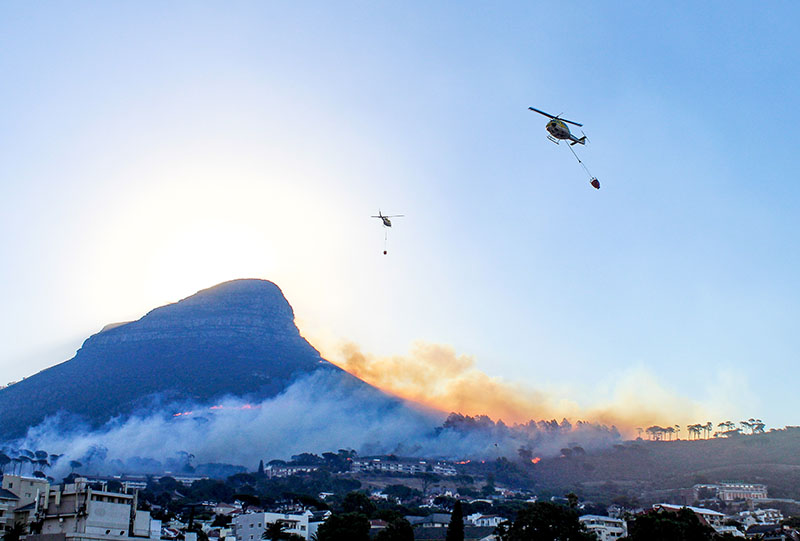
As the climate warms, droughts are becoming more severe increasing the likelihood of wildfires. Climate change and land-use change are projected to make wildfires more frequent and intense.
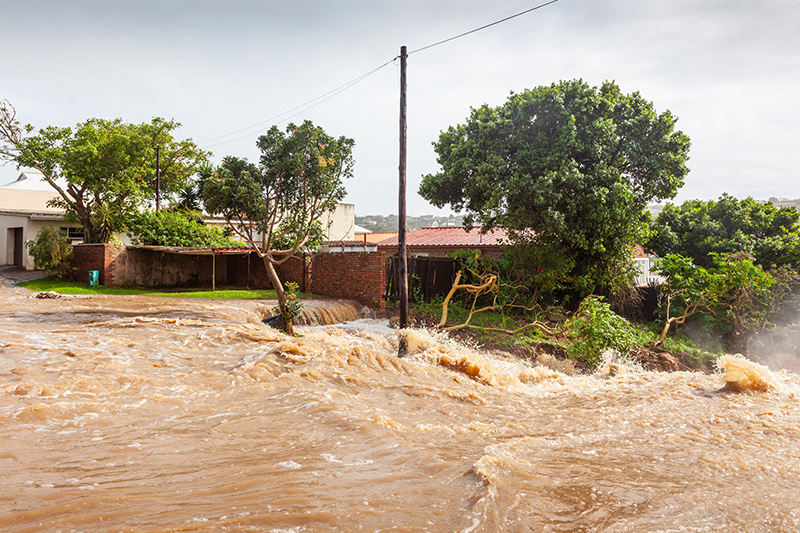
Climate change is increasing the likelihood and severity of extreme weather events such as floods and droughts. The flooding that struck KwaZulu-Natal in April 2022 has been described as South Africa’s 'deadliest storm on record'.
Building networks
The School for Climate Studies has joined and initiated several innovative research and teaching projects to promote research for impact. One example is its collaboration with the South African Environmental Observation Network and German university partners to measure ecosystem functioning in all major South African biomes under different land uses. Another collaboration that is gaining momentum is a project to model climate risks related to hydrology and biodiversity at UNESCO heritage sites in southern Africa.
In addition to promoting ‘new thinking’ within the University about the need for interdisciplinary climate-related studies and growing its research networks (here and abroad), the School is also playing an important role in enabling climate teachers. As one of the 15 members of the GAUC, the School co-leads some of the organisation’s pilot projects on climate and climate policy training.
The concept of planetary health is also gaining traction in teaching in the Faculty of Medical and Health Sciences. Since 2021, environmental stewardship has been embedded in the undergraduate MBChB curriculum. Dr Christian Lueme, a lecturer in planetary health in the faculty, is helping drive systemic change through his teaching. His position is part-funded by the School.
Collaborative crunch time
The science is clear: To avoid crossing the dangerous climate change thresholds beyond which our planet will become far less inhabitable, we need to reduce global human-caused carbon dioxide emissions by almost half (45%) by 2030 and to almost zero by 2050, and then into negative emissions (net uptake) for some decades.
Midgley says: “We are climbing up the risk scale from moderate to high risk, which means it is not only the direct environmental impacts we’re worried about but also the risks that come from accelerating CO2 emissions reductions and carbon capture. Such risks include inappropriate planting of non-native trees in vulnerable African landscapes, grasslands and savannas, thereby selling questionable (at best) carbon capture benefits for well-known disastrous impacts on local livelihoods, ecosystem degradation, loss of water security and increased risks of fire damages.”
The future will look very different no matter what – ranging between major socio-economic and energy choices, and increasingly damaging adverse impacts of climate and impoverished ecosystems. Both mitigation and adaptation efforts are essential.
Midgley says research across disciplines and traditional academic ‘borders’ is already helping to inform a climate-resilient, just and equitable development path for the southern African region and to build a low-carbon society. In discussions with the Presidential Climate Commission, the value of this approach has been welcomed and encouraged.
Midgley concludes: “The science to inform appropriate and timely responses is vital. We have an important role to play.”